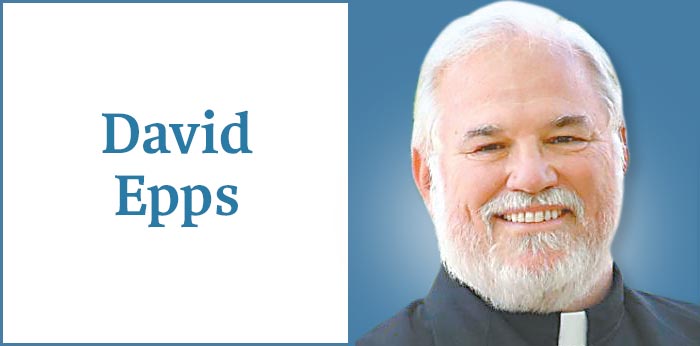If the nation was like it was when I was in public school so many years ago, we would be in the middle of Easter break. That’s right — Easter break. Not spring break.
Back in the day, the break was movable because Easter was movable. Easter Sunday determined when Easter break would take place. Similarly, we did not have winter break. We had Christmas break because the break occurred … well … at Christmastime.
There was a time, unknown by my children or grandchildren, when the secular state recognized that the observance of religion was a positive force. Thus, because the Church observed Holy Week, especially in areas that were heavily Catholic or Episcopalian, and because Good Friday was a sacred holiday, the state allowed children to be free to attend these events. If the child and his/her family were not religious, or at least not Christian, then they benefitted by having a break as well.
And, again back in the day, the school choruses did not produce a “Winter Concert,” but, rather, a Christmas Concert. Why? Because it was the period leading up to Christmas. Songs included might be secular, such as “Jingle Bells,” or “When Santa Claus comes to Town,” but the program unashamedly included Christmas hymns such as, “O Holy Night,” “Silent Night,” “It Came Upon a Midnight Clear,” and others that would be commonly sung in the church services.
Why? Because it was Christmas. The Christmas break allowed families time to prepare for the holiday, to set up the trees, and to visit family members who lived away somewhere. It was the one time a year when a working stiff could take four days’ vacation and parlay that into eight off days in a row.
That all changed slowly but surely when some people felt that the way the Constitution had been interpreted for nearly two hundred years was all wrong. Religion, especially the Christian religion, was not to be celebrated in the public arena.
In fact, religion was to be banned from the public arena, and especially from the schools. We were to now live in a world where the United States Constitution was to be re-interpreted not as protecting the right of citizens to freely express religious views but to protect then from having to encounter religious views or expressions at all.
So, it became normal to exclude symbols of faith from the public schools altogether. It was only the beginning, of course. Religious symbols were then to be excluded from all government properties, buildings, and events.
A few token expressions were permitted as long as they were “non-sectarian.” Prayer might be allowed to open secular government proceedings, such as city council meetings, but only if the prayer was of the “To whom it may concern” variety. The prayers were to be so generic that one could be thought of as praying to a door knob.
There has been an effort to change the headstones on military graves. For the most part, during World War II, Jewish military personnel who were killed had a headstone that featured the Star of David. Most others who were KIA were buried under a cross. Apparently, that offends some people who want that changed.
The result of increased secularization, and the humanistic values it supports, has resulted in a massive increase in home school students and the establishment of Christian (or other religious) schools.
In the county where I live, Trinity Christian School began with 17 students a couple of decades ago. Now the school boasts some 1,100 students whose parents pay both taxes that support secular schools and the tuition that supports their choice of school.
Secular educators and politicians fight fervently against a school voucher program that would allow perhaps tens of millions of children to flee the public system in favor of a faith-based school. A number of studies show that children in a faith-based school, or even those in home school, do better than do students locked into the secular system.
But as the Beatles sang:
“There are places I’ll remember
“All my life, though some have changed
“Some forever, not for better
“Some have gone and some remain.”
It is what it is. But the new way of doing school means that, while Good Friday services are being held at the noon hour this week, most students will not be permitted to attend. Many of them had their “winter break” last week.
[David Epps is the pastor of the Cathedral of Christ the King, Sharpsburg, GA between Newnan and Peachtree City (www.ctk.life). He is the bishop of the Diocese of the Mid-South which consists of Georgia and Tennessee and the Associate Endorser for the Department of the Armed Forces, U. S. Military Chaplains, ICCEC. He may contacted at [email protected].]













Leave a Comment
You must be logged in to post a comment.